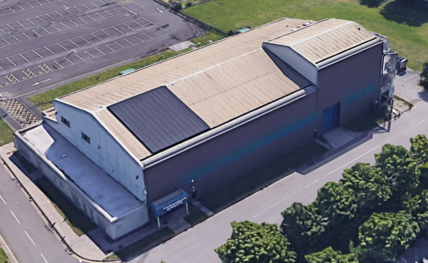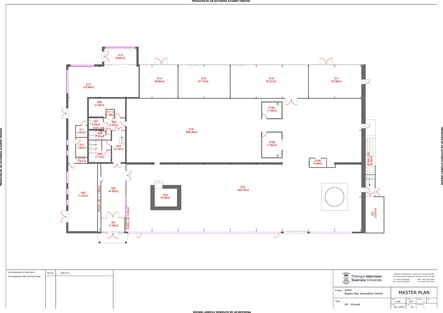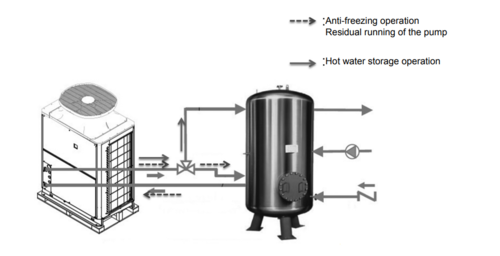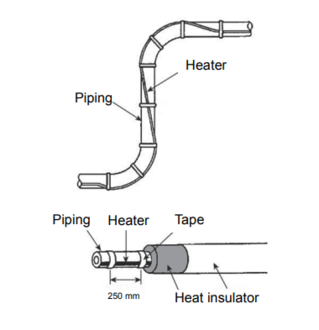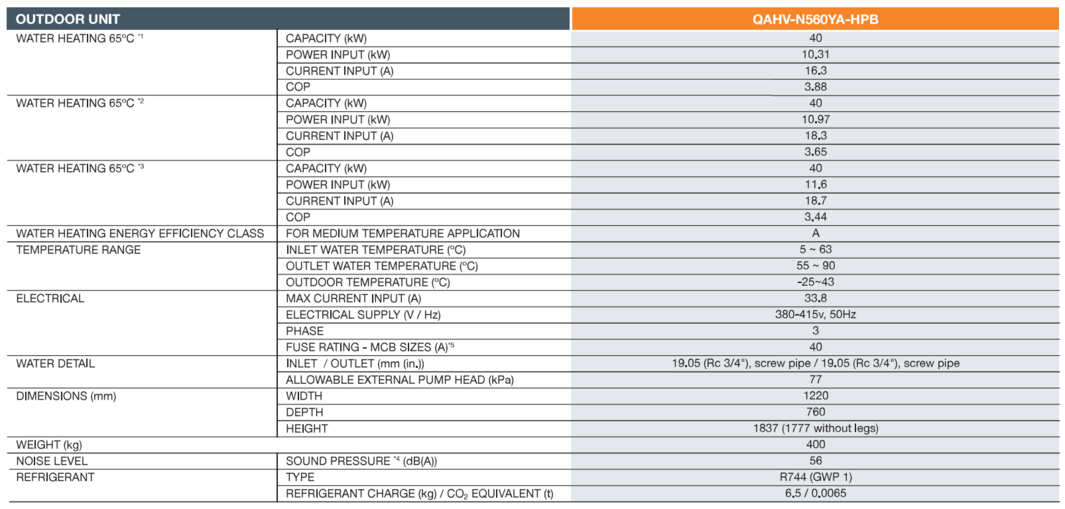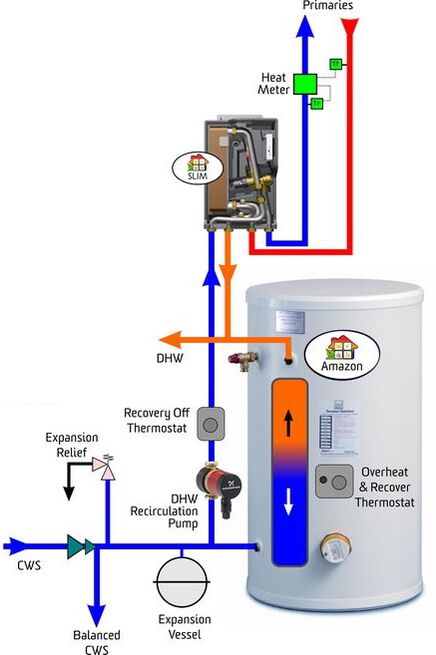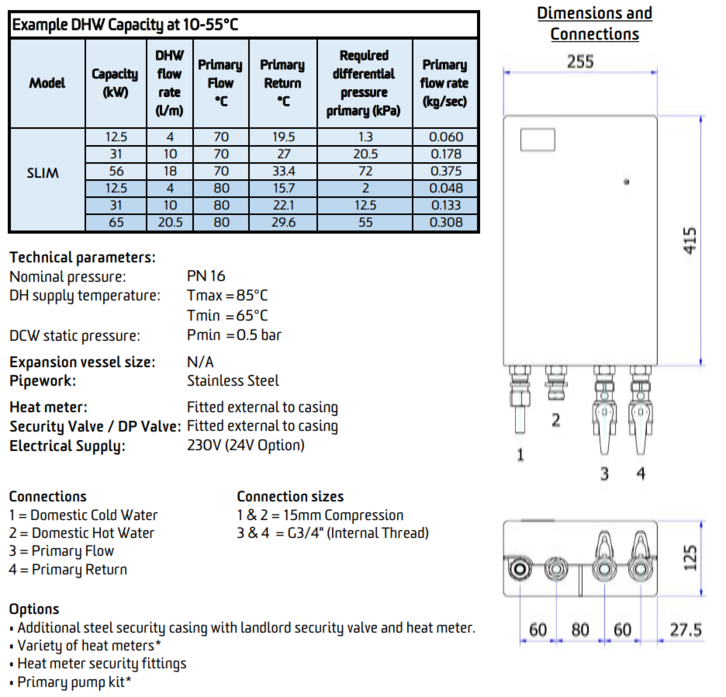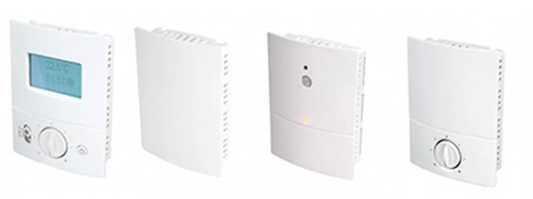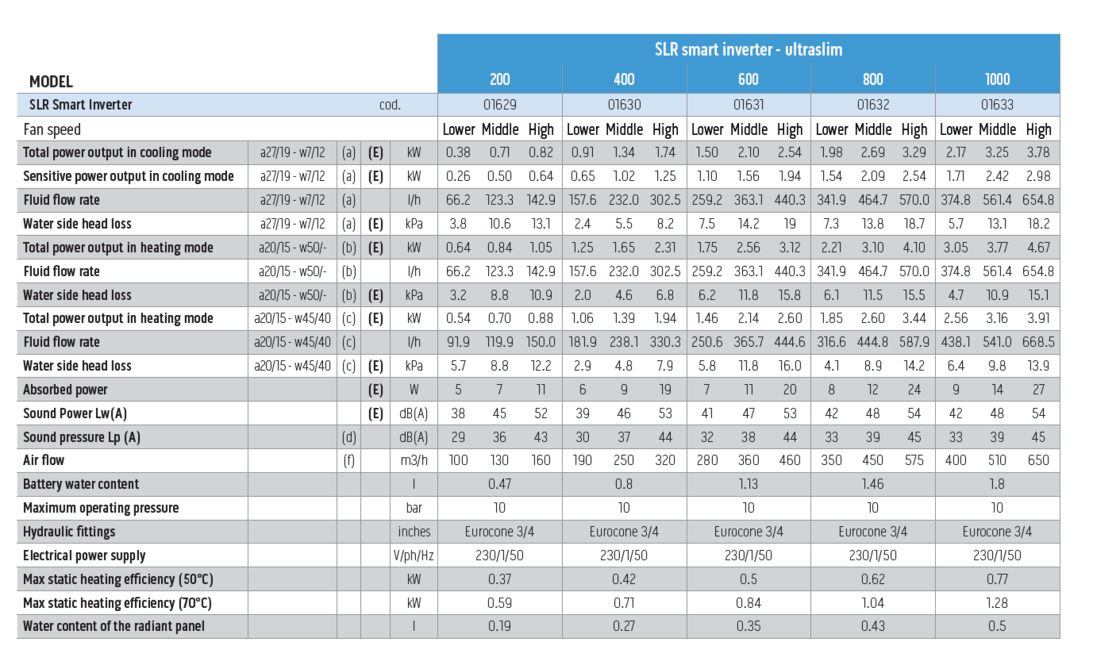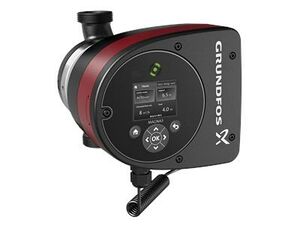Difference between revisions of "Solar Heat Energy Demonstrator"
| Line 60: | Line 60: | ||
<pre class="wikidiagrams"> | <pre class="wikidiagrams"> | ||
heatweb_shed_schematic.json Latest Schematic | |||
QmTSUmCjqYSsy73DgFxVtmrCyJyq4fX6EZkRQi42NzhcDc.json Schematic | QmTSUmCjqYSsy73DgFxVtmrCyJyq4fX6EZkRQi42NzhcDc.json Schematic 1 | ||
QmYXYDAwtSVXj7WPxWeNRWmrVHV2tFJwUW25RWcrxkXdWQ With Zip Heater | QmYXYDAwtSVXj7WPxWeNRWmrVHV2tFJwUW25RWcrxkXdWQ With Zip Heater | ||
QmP3uCFyRfZoa3qtWYfdCMNb8ithYRkoyU5G6MFe821Hjs Central Heating Wiring | QmP3uCFyRfZoa3qtWYfdCMNb8ithYRkoyU5G6MFe821Hjs Central Heating Wiring | ||
</pre> | </pre> | ||
== Controls Strategy == | == Controls Strategy == | ||
Revision as of 16:21, 28 October 2022
To Do:
- Review designs and calculate loads
- Produce schematic of proposed design
- Detailed design of pipework and equipment
Aims
The aim of the project is two-fold.
- Provide better heating for the building using low carbon heat, bringing the building up to a suitable level of heating to be passed on to the next occupants.
- Conduct detailed tests to work out the best practices and installation choices, to maximise in-use efficiency of CO2 heat pump technology, and work out it's place in the renewables landscape for the future.
Requirements
Following initial site meetings the following requirements have been set:
- Installation of CO2 air source heat pump(s)
- Low use domestic hot water
- Central heating to 10 office spaces
- Office spaces to be fitted with a selection of heat emitter types
- System to be flexible enough to allow different heating strategies to be tested
- System must be of a standard to be handed over to the next building occupants
- System must allow for the optional use of fan convectors as final stage to heat the main area and lower return temperatures
- System to be provide real-time operational data and allow details adjustment of settings and controls logic
Documents
Design Points
The following points have been considered.
Because of the need for (1) the heat pump defrost circuit to go through the store, and (2) the stability of the output from the heat pump is unknown and could do with some buffering via the top of the buffer store, it will be prudent to fit buffer stores with internal diffuser plates to create chambers to contain turbulence, and maintain stratification. NOTE: When only 1 buffer is to be used, top and bottom plates in same store
This table shows water quality requirements for the heat pump, and also for a secondary side (not used in SHED). It is important that regular tests are made to ensure this is met. It is also advisable to install water filtration equipment that can maintain these parameters with as little maintenance as possible. Remote monitoring on each of these would be nice.
System Schematic
- Double-click in the diagram background in order to add a new node there.
- Add ports to a selected node by clicking the above buttons or by using the context menu.
- Draw links between ports by dragging between ports.
- Right-click on a port to bring up menu.
heatweb_shed_schematic.json Latest Schematic QmTSUmCjqYSsy73DgFxVtmrCyJyq4fX6EZkRQi42NzhcDc.json Schematic 1 QmYXYDAwtSVXj7WPxWeNRWmrVHV2tFJwUW25RWcrxkXdWQ With Zip Heater QmP3uCFyRfZoa3qtWYfdCMNb8ithYRkoyU5G6MFe821Hjs Central Heating Wiring
Controls Strategy
Heat Pump Control
- Control of the CO2 heat pump is based on recovery of the associated 500 litre buffer store.
- Temperature sensors in the buffer store at different positions provide signals to the heat pump controls.
- The heat pump will start reheating the buffer when there is a set volume of water ready to reheat and continue until the buffer is fully heated
- The temperature the heat pump heats water to is set using an external control signal, and will be driven by required temperatures to deliver hot water and central heating, between 60C and 85C.
- Temperature requirements will be calculated from external air temperatures.
- The power output of the heat pump may also be externally controlled.
- In order to minimise the number of firing cycles per day, the power will be modulated in order to achieve a steady state where possible, reverting to batch loading where loads are lower than minimum heat pump output.
- The COP off the heat pump will be calculated from measuring both the electrical input and the heat output.
- Operational strategies may be adjusted based on feedback from COP calculations.
Domestic Hot Water (DHW)
- Domestic hot water is provided by a 90 litre unvented hot water cylinder.
- The hot water cylinder is located as near to outlets as possible to minimise tap delay.
- The hot water cylinder is fitted with multiple temperature sensors.
- DHW is heated by the use of a plate heat exchanger assembly (an HIU), with cold water pumped from the base of the cylinder through the plate heat exchanger where it is heated to target temperatures and fed into the top of the cylinder, heating variable quantities from the top down.
- The plate heat exchanger if fed with hot primary water from the buffer store, heated by the heat pump.
- The volumes of hot water heated may be adjusted based on DHW requirements (occupancy levels).
- The rate that water is heated may be adjusted by altering the pump speed.
- The rate of reheat will be accelerated as the hot water cylinder empties, reverting to instantaneous DHW generation when the cylinder is almost exhausted.
- The hot water cylinder is fitted with two immersion heaters. One at the bottom to allow heating of the entire cylinder, and one located at the top allowing for rapid reheating of small quantities.
- Use of the upper heating element in partnership with the plate heat exchanger pump allows variable quantities of water to also be heated by the upper electric element alone.
Central Heating
- Central heating is driven by pumping heated water from the buffer store to heat emitters. when there is a demand for heat.
- The central heating pump is switched off when there is no load requirements for either DHW or central heating.
- The flow rate through each heat emitter (radiator or fan convector or panel) is varied in order to achieve required room temperatures.
- Flow rates through heat emitters is controlled by a 0-10v actuator fitted on the return pipe from the emitters, located on a manifold into which all zones return independently.
- In order to eliminate excessive start-up temperatures, heating start times will be adjusted in order to achieve target temperatures by set times. The start times will be calculated based on external air temperatures and system feed-back (optimum start).
Heat Pump Selection
Selection
The selected heat pump is a Mitsubishi Electric QAVG 40kW CO2 Air Source Heat Pump.
Specifically designed for commercial sanitary hot water application, where gas boilers, combined heat and power systems (CHP) or electric water heating have been traditionally utilised, the QAHV provides a low carbon solution for hospitals, hotels, leisure centres and student accommodation. Utilising the natural and stable refrigerant CO2 (R744), the environmentally clean solution enables compliance to strict local planning laws and boosts BREEAM points. Compounded by the increasing decarbonisation of the electrical grid and the UK’s commitment to Net Zero 2050, the QAHV provides a high efficiency, low carbon hot water delivery solution with leaving water temperature up to 90°C.
Documentation
![]() QAHV_6PP_AW_v2
QAHV_6PP_AW_v2
![]() QAHV-N560YA-HPB_Service_Manual
QAHV-N560YA-HPB_Service_Manual
![]() QAHV-N560YA-HPB_Install_Manual
QAHV-N560YA-HPB_Install_Manual
![]() QAHV-N560YA-HPB-PI-SHEET
QAHV-N560YA-HPB-PI-SHEET
Technical Specifications
Domestic Hot Water
Hot water to be provided using a SLIM HIU from Thermal Integration in partnership with a 90 litre unvented cylinder.
- Fully electronic solution with anti-legionella cycle & PC connectivity for set-up and commissioning
- Calibrated sensors for fast DHW temperature control
- Eco / Comfort DHW modes for continuous or intelligent pre-heat
- Compact design - 240mm (W) x 420mm (H) x 90mm (D)
- Fully insulated compartmentalised casing
- Stainless steel pipework
- Open control options
- RS485 interface
- Optional primary pump kit Optional 24V
- DC version
- Optional security case with integral heat meter, landlord security valve and anti-fraud sealing kit.
- From the same family of HIUs as the DATA - has the industries best BESA VWART figures of all time
See http://heatweb.co.uk/w/index.php?title=The_SLIM_HIU
Central Heating
Room Controllers
Initial requirement is for:
- temperature, humidity and CO2 sensing.
- hard wired
- preferable Modbus RTU / TCP, or BACNET
- existing units that use 0-10v and resistance can be worked with
 Sontay GS-CO2-S
Sontay GS-CO2-S
Suggest SC-S-403000 with:
- temperature, humidity and CO2 sensing.
- PIR sensing
- Modbus RTU or BACnet
- 24v dc
![]() Sc-x-download.pdf
Sc-x-download.pdf
![]() Modbus Registers
Modbus Registers
![]() SC-S Smart Sensor
SC-S Smart Sensor
Radiator Outputs
https://www.stelrad.com/radiators/standard-steel-radiators/classic-compact/
The following outputs are based on a 33C delta T.
This comes from a 75/30C profile, with an average temperature of 52.5C, giving a 33C difference to room temperatures.
The heat pump envelope allows loads to be increased 40% over these values if ever needed.
| Range | Height | Length | Type | Output dt33 | |
| mm | mm | Watts | Btu/hr | ||
| COMPACT | 300 | 500 | K1 | 147 | 502 |
| COMPACT | 300 | 1000 | K1 | 294 | 1,002 |
| COMPACT | 300 | 1500 | K1 | 441 | 1,505 |
| COMPACT | 300 | 2000 | K1 | 587 | 2,005 |
| COMPACT | 300 | 2500 | K1 | 735 | 2,507 |
| COMPACT | 300 | 3000 | K1 | 881 | 3,007 |
| COMPACT | 450 | 400 | K1 | 174 | 595 |
| COMPACT | 450 | 500 | K1 | 218 | 744 |
| COMPACT | 450 | 600 | K1 | 262 | 894 |
| COMPACT | 450 | 700 | K1 | 305 | 1,042 |
| COMPACT | 450 | 800 | K1 | 349 | 1,191 |
| COMPACT | 450 | 900 | K1 | 392 | 1,339 |
| COMPACT | 450 | 1000 | K1 | 436 | 1,489 |
| COMPACT | 450 | 1100 | K1 | 480 | 1,638 |
| COMPACT | 450 | 1200 | K1 | 523 | 1,786 |
| COMPACT | 450 | 1400 | K1 | 610 | 2,084 |
| COMPACT | 450 | 1600 | K1 | 698 | 2,383 |
| COMPACT | 450 | 1800 | K1 | 785 | 2,680 |
| COMPACT | 450 | 2000 | K1 | 872 | 2,978 |
| COMPACT | 450 | 2200 | K1 | 960 | 3,275 |
| COMPACT | 450 | 2400 | K1 | 1,047 | 3,572 |
| COMPACT | 450 | 2600 | K1 | 1,134 | 3,872 |
| COMPACT | 450 | 2800 | K1 | 1,222 | 4,169 |
| COMPACT | 450 | 3000 | K1 | 1,309 | 4,466 |
| COMPACT | 600 | 400 | K1 | 226 | 772 |
| COMPACT | 600 | 500 | K1 | 283 | 965 |
| COMPACT | 600 | 600 | K1 | 339 | 1,158 |
| COMPACT | 600 | 700 | K1 | 396 | 1,351 |
| COMPACT | 600 | 800 | K1 | 452 | 1,544 |
| COMPACT | 600 | 900 | K1 | 509 | 1,737 |
| COMPACT | 600 | 1000 | K1 | 565 | 1,930 |
| COMPACT | 600 | 1100 | K1 | 622 | 2,123 |
| COMPACT | 600 | 1200 | K1 | 679 | 2,316 |
| COMPACT | 600 | 1400 | K1 | 792 | 2,702 |
| COMPACT | 600 | 1600 | K1 | 905 | 3,088 |
| COMPACT | 600 | 1800 | K1 | 1,018 | 3,474 |
| COMPACT | 600 | 2000 | K1 | 1,131 | 3,860 |
| COMPACT | 600 | 2200 | K1 | 1,244 | 4,246 |
| COMPACT | 600 | 2400 | K1 | 1,357 | 4,632 |
| COMPACT | 600 | 2600 | K1 | 1,470 | 5,018 |
| COMPACT | 600 | 2800 | K1 | 1,583 | 5,404 |
| COMPACT | 600 | 3000 | K1 | 1,696 | 5,790 |
| COMPACT | 700 | 400 | K1 | 258 | 880 |
| COMPACT | 700 | 500 | K1 | 323 | 1,101 |
| COMPACT | 700 | 600 | K1 | 387 | 1,319 |
| COMPACT | 700 | 700 | K1 | 451 | 1,540 |
| COMPACT | 700 | 800 | K1 | 516 | 1,761 |
| COMPACT | 700 | 900 | K1 | 580 | 1,979 |
| COMPACT | 700 | 1000 | K1 | 645 | 2,200 |
| COMPACT | 700 | 1100 | K1 | 709 | 2,420 |
| COMPACT | 700 | 1200 | K1 | 773 | 2,639 |
| COMPACT | 700 | 1400 | K1 | 902 | 3,080 |
| COMPACT | 700 | 1600 | K1 | 1,031 | 3,519 |
| COMPACT | 700 | 1800 | K1 | 1,160 | 3,960 |
| COMPACT | 700 | 2000 | K1 | 1,289 | 4,399 |
| COMPACT | 700 | 2200 | K1 | 1,418 | 4,839 |
| COMPACT | 700 | 2400 | K1 | 1,547 | 5,280 |
| COMPACT | 700 | 2600 | K1 | 1,676 | 5,719 |
| COMPACT | 700 | 2800 | K1 | 1,805 | 6,160 |
| COMPACT | 700 | 3000 | K1 | 1,934 | 6,599 |
| COMPACT | 300 | 500 | P+ | 215 | 735 |
| COMPACT | 300 | 1000 | P+ | 430 | 1,467 |
| COMPACT | 300 | 1500 | P+ | 645 | 2,202 |
| COMPACT | 300 | 2000 | P+ | 860 | 2,934 |
| COMPACT | 300 | 2500 | P+ | 1,075 | 3,669 |
| COMPACT | 300 | 3000 | P+ | 1,290 | 4,401 |
| COMPACT | 450 | 400 | P+ | 243 | 831 |
| COMPACT | 450 | 500 | P+ | 305 | 1,040 |
| COMPACT | 450 | 600 | P+ | 365 | 1,247 |
| COMPACT | 450 | 700 | P+ | 426 | 1,455 |
| COMPACT | 450 | 800 | P+ | 487 | 1,662 |
| COMPACT | 450 | 900 | P+ | 548 | 1,871 |
| COMPACT | 450 | 1000 | P+ | 609 | 2,078 |
| COMPACT | 450 | 1100 | P+ | 670 | 2,286 |
| COMPACT | 450 | 1200 | P+ | 730 | 2,493 |
| COMPACT | 450 | 1400 | P+ | 852 | 2,909 |
| COMPACT | 450 | 1600 | P+ | 974 | 3,324 |
| COMPACT | 450 | 1800 | P+ | 1,096 | 3,740 |
| COMPACT | 450 | 2000 | P+ | 1,217 | 4,155 |
| COMPACT | 450 | 2200 | P+ | 1,339 | 4,571 |
| COMPACT | 450 | 2400 | P+ | 1,461 | 4,986 |
| COMPACT | 450 | 2600 | P+ | 1,583 | 5,402 |
| COMPACT | 450 | 2800 | P+ | 1,704 | 5,817 |
| COMPACT | 450 | 3000 | P+ | 1,826 | 6,233 |
| COMPACT | 600 | 400 | P+ | 310 | 1,059 |
| COMPACT | 600 | 500 | P+ | 388 | 1,325 |
| COMPACT | 600 | 600 | P+ | 466 | 1,589 |
| COMPACT | 600 | 700 | P+ | 544 | 1,855 |
| COMPACT | 600 | 800 | P+ | 621 | 2,119 |
| COMPACT | 600 | 900 | P+ | 699 | 2,385 |
| COMPACT | 600 | 1000 | P+ | 776 | 2,649 |
| COMPACT | 600 | 1100 | P+ | 854 | 2,915 |
| COMPACT | 600 | 1200 | P+ | 931 | 3,178 |
| COMPACT | 600 | 1400 | P+ | 1,086 | 3,708 |
| COMPACT | 600 | 1600 | P+ | 1,242 | 4,238 |
| COMPACT | 600 | 1800 | P+ | 1,397 | 4,768 |
| COMPACT | 600 | 2000 | P+ | 1,552 | 5,297 |
| COMPACT | 600 | 2200 | P+ | 1,707 | 5,827 |
| COMPACT | 600 | 2400 | P+ | 1,863 | 6,357 |
| COMPACT | 600 | 2600 | P+ | 2,018 | 6,887 |
| COMPACT | 600 | 2800 | P+ | 2,173 | 7,416 |
| COMPACT | 600 | 3000 | P+ | 2,328 | 7,946 |
| COMPACT | 700 | 400 | P+ | 353 | 1,205 |
| COMPACT | 700 | 500 | P+ | 441 | 1,507 |
| COMPACT | 700 | 600 | P+ | 530 | 1,808 |
| COMPACT | 700 | 700 | P+ | 618 | 2,109 |
| COMPACT | 700 | 800 | P+ | 706 | 2,410 |
| COMPACT | 700 | 900 | P+ | 795 | 2,712 |
| COMPACT | 700 | 1000 | P+ | 883 | 3,013 |
| COMPACT | 700 | 1100 | P+ | 971 | 3,314 |
| COMPACT | 700 | 1200 | P+ | 1,059 | 3,616 |
| COMPACT | 700 | 1400 | P+ | 1,236 | 4,218 |
| COMPACT | 700 | 1600 | P+ | 1,412 | 4,821 |
| COMPACT | 700 | 1800 | P+ | 1,589 | 5,423 |
| COMPACT | 700 | 2000 | P+ | 1,766 | 6,026 |
| COMPACT | 700 | 2200 | P+ | 1,942 | 6,629 |
| COMPACT | 700 | 2400 | P+ | 2,119 | 7,231 |
| COMPACT | 700 | 2600 | P+ | 2,295 | 7,834 |
| COMPACT | 700 | 2800 | P+ | 2,472 | 8,436 |
| COMPACT | 700 | 3000 | P+ | 2,648 | 9,039 |
| COMPACT | 300 | 500 | K2 | 283 | 967 |
| COMPACT | 300 | 1000 | K2 | 567 | 1,934 |
| COMPACT | 300 | 1500 | K2 | 850 | 2,901 |
| COMPACT | 300 | 2000 | K2 | 1,133 | 3,868 |
| COMPACT | 300 | 2500 | K2 | 1,417 | 4,835 |
| COMPACT | 300 | 3000 | K2 | 1,700 | 5,802 |
| COMPACT | 450 | 400 | K2 | 316 | 1,079 |
| COMPACT | 450 | 500 | K2 | 396 | 1,351 |
| COMPACT | 450 | 600 | K2 | 475 | 1,621 |
| COMPACT | 450 | 700 | K2 | 554 | 1,891 |
| COMPACT | 450 | 800 | K2 | 633 | 2,160 |
| COMPACT | 450 | 900 | K2 | 712 | 2,430 |
| COMPACT | 450 | 1000 | K2 | 791 | 2,700 |
| COMPACT | 450 | 1100 | K2 | 870 | 2,970 |
| COMPACT | 450 | 1200 | K2 | 949 | 3,240 |
| COMPACT | 450 | 1400 | K2 | 1,107 | 3,779 |
| COMPACT | 450 | 1600 | K2 | 1,266 | 4,321 |
| COMPACT | 450 | 1800 | K2 | 1,424 | 4,860 |
| COMPACT | 450 | 2000 | K2 | 1,582 | 5,400 |
| COMPACT | 450 | 2200 | K2 | 1,740 | 5,939 |
| COMPACT | 450 | 2400 | K2 | 1,898 | 6,479 |
| COMPACT | 450 | 2600 | K2 | 2,057 | 7,021 |
| COMPACT | 450 | 2800 | K2 | 2,215 | 7,560 |
| COMPACT | 450 | 3000 | K2 | 2,373 | 8,100 |
| COMPACT | 600 | 400 | K2 | 400 | 1,365 |
| COMPACT | 600 | 500 | K2 | 500 | 1,705 |
| COMPACT | 600 | 600 | K2 | 600 | 2,046 |
| COMPACT | 600 | 700 | K2 | 699 | 2,387 |
| COMPACT | 600 | 800 | K2 | 800 | 2,729 |
| COMPACT | 600 | 900 | K2 | 900 | 3,070 |
| COMPACT | 600 | 1000 | K2 | 999 | 3,411 |
| COMPACT | 600 | 1100 | K2 | 1,099 | 3,752 |
| COMPACT | 600 | 1200 | K2 | 1,199 | 4,092 |
| COMPACT | 600 | 1400 | K2 | 1,399 | 4,776 |
| COMPACT | 600 | 1600 | K2 | 1,599 | 5,457 |
| COMPACT | 600 | 1800 | K2 | 1,799 | 6,140 |
| COMPACT | 600 | 2000 | K2 | 1,999 | 6,822 |
| COMPACT | 600 | 2200 | K2 | 2,198 | 7,503 |
| COMPACT | 600 | 2400 | K2 | 2,399 | 8,186 |
| COMPACT | 600 | 2600 | K2 | 2,598 | 8,868 |
| COMPACT | 600 | 2800 | K2 | 2,798 | 9,551 |
| COMPACT | 600 | 3000 | K2 | 2,998 | 10,232 |
| COMPACT | 700 | 400 | K2 | 452 | 1,544 |
| COMPACT | 700 | 500 | K2 | 566 | 1,932 |
| COMPACT | 700 | 600 | K2 | 679 | 2,318 |
| COMPACT | 700 | 700 | K2 | 792 | 2,704 |
| COMPACT | 700 | 800 | K2 | 905 | 3,090 |
| COMPACT | 700 | 900 | K2 | 1,018 | 3,476 |
| COMPACT | 700 | 1000 | K2 | 1,131 | 3,862 |
| COMPACT | 700 | 1100 | K2 | 1,245 | 4,248 |
| COMPACT | 700 | 1200 | K2 | 1,358 | 4,634 |
| COMPACT | 700 | 1400 | K2 | 1,584 | 5,406 |
| COMPACT | 700 | 1600 | K2 | 1,811 | 6,180 |
| COMPACT | 700 | 1800 | K2 | 2,037 | 6,952 |
| COMPACT | 700 | 2000 | K2 | 2,263 | 7,724 |
| COMPACT | 700 | 2200 | K2 | 2,489 | 8,496 |
| COMPACT | 700 | 2400 | K2 | 2,715 | 9,268 |
| COMPACT | 700 | 2600 | K2 | 2,942 | 10,041 |
| COMPACT | 700 | 2800 | K2 | 3,168 | 10,813 |
| COMPACT | 700 | 3000 | K2 | 3,394 | 11,585 |
| COMPACT K3 | 300 | 1000 | K3 | 778 | 2,656 |
| COMPACT K3 | 300 | 2000 | K3 | 1,557 | 5,312 |
| COMPACT K3 | 500 | 600 | K3 | 712 | 2,429 |
| COMPACT K3 | 500 | 700 | K3 | 830 | 2,833 |
| COMPACT K3 | 500 | 800 | K3 | 949 | 3,239 |
| COMPACT K3 | 500 | 900 | K3 | 1,067 | 3,642 |
| COMPACT K3 | 500 | 1000 | K3 | 1,186 | 4,048 |
| COMPACT K3 | 500 | 1100 | K3 | 1,305 | 4,453 |
| COMPACT K3 | 500 | 1200 | K3 | 1,423 | 4,857 |
| COMPACT K3 | 500 | 1400 | K3 | 1,661 | 5,666 |
| COMPACT K3 | 500 | 1600 | K3 | 1,898 | 6,477 |
| COMPACT K3 | 500 | 1800 | K3 | 2,135 | 7,286 |
| COMPACT K3 | 500 | 2000 | K3 | 2,373 | 8,095 |
| COMPACT K3 | 500 | 2400 | K3 | 2,847 | 9,714 |
| COMPACT K3 | 600 | 400 | K3 | 552 | 1,882 |
| COMPACT K3 | 600 | 500 | K3 | 690 | 2,353 |
| COMPACT K3 | 600 | 600 | K3 | 827 | 2,821 |
| COMPACT K3 | 600 | 700 | K3 | 965 | 3,292 |
| COMPACT K3 | 600 | 800 | K3 | 1,103 | 3,762 |
| COMPACT K3 | 600 | 900 | K3 | 1,241 | 4,233 |
| COMPACT K3 | 600 | 1000 | K3 | 1,378 | 4,703 |
| COMPACT K3 | 600 | 1100 | K3 | 1,516 | 5,174 |
| COMPACT K3 | 600 | 1200 | K3 | 1,654 | 5,644 |
| COMPACT K3 | 600 | 1400 | K3 | 1,930 | 6,585 |
| COMPACT K3 | 600 | 1600 | K3 | 2,205 | 7,524 |
| COMPACT K3 | 600 | 1800 | K3 | 2,481 | 8,466 |
| COMPACT K3 | 600 | 2000 | K3 | 2,757 | 9,407 |
| COMPACT K3 | 600 | 2400 | K3 | 3,309 | 11,289 |
| COMPACT K3 | 700 | 500 | K3 | 782 | 2,670 |
| COMPACT K3 | 700 | 600 | K3 | 939 | 3,203 |
| COMPACT K3 | 700 | 700 | K3 | 1,095 | 3,737 |
| COMPACT K3 | 700 | 800 | K3 | 1,252 | 4,272 |
| COMPACT K3 | 700 | 900 | K3 | 1,408 | 4,806 |
| COMPACT K3 | 700 | 1000 | K3 | 1,565 | 5,339 |
| COMPACT K3 | 700 | 1100 | K3 | 1,721 | 5,873 |
| COMPACT K3 | 700 | 1200 | K3 | 1,878 | 6,406 |
| COMPACT K3 | 700 | 1400 | K3 | 2,191 | 7,475 |
| COMPACT K3 | 700 | 1600 | K3 | 2,504 | 8,542 |
| COMPACT K3 | 700 | 1800 | K3 | 2,817 | 9,611 |
| COMPACT K3 | 700 | 2000 | K3 | 3,130 | 10,678 |
Convector Outputs
These are existing units to me made use of.
Pump Selection
Magna3 25-120
Parts List
The following parts are key to operation of the system.
| Item | Quantity | Notes |
|---|---|---|
| CO2 Air Source Heat Pump & Accessories | 1 | |
| 500 litre Buffer Store | 1 | |
| 100 litre Direct Unvented Cylinder | 1 | |
| Plate Heat Exchanger Recovery Unit (inc pump) | 1 | |
| Magna 3 Pump 25-120 | 1 | |
| CIM200 Modbus Card for Magna3 | 1 | Covered under project |
| 12 Port Manifold complete with 0-10v Actuators | 2 | Covered under project |
| NTC Temperature Sensors (pipe & immersion) | 40 | Covered under project |
| Static Pressure Sensors | 5 | Covered under project |
| Magnaclean Air & Dirt Separator | 1 | Basic model |
| Primary Expansion Vessel 50 litres | 1 | |
| Sealed System Kit | 1 | |
| Heat Meters (Zenner C5 with M-Bus) | 3 | Covered under project |
| DPCV (Differential Pressure Control Valve 22mm) | 1 | |
| Radiators | ||
| Panel Heaters | ||
| Fan Convectors | ||
| Three Port Control Valve, Modulating 0-10v, 22mm | 1 | Covered under project |
| Room Controllers, Sontay, Modbus, with Temp, Humidity, CO2 & Setpoint | 18 | Covered under project |
BEMS System including:
|
1 | Covered under project |
| Pipework and Insulation | ||
| Trace heating for external heat pump pipework |
The following parts are optional, to achieve higher standards more suited to heat networks than single client systems.
| Item | Quantity | Notes |
|---|---|---|
| Pressurisation Set | 1 | |
System Benefits
The installation of a CO2 Heat Pump is not as simple as using basic electric heaters and an electric unvented cylinder, however the CO2 system offers a COP performance of 3+, translating to a 67% saving in electrical consumption and running costs.
The following points should be considered in the choice of whether to use CO2 heat pumps in the SHED or to go the easier route.
- COP of 3+ provides a 67% saving in both electrical consumption, costs and CO2 emissions. For every unit of electricity used, a further two units will be generated for 'free'.
- The system offers the ability to deliver outputs far in excess of the calculated peak loads, and will be able to deliver services on the coldest of days.
- Reduced peak electrical loads / supplies.
- The ability to time heat generation with cheap rate electrical tariffs (e.g. Economy 10/2000) - up to capacity of storage.
- Centrally driven, with the possibility to add in additional heat sources in future, including solar thermal or biomass . The system is future proofed for any eventuality.
- While the SHED is a single building, the layout and loads are comparable to a heat network consisting of up to 20 properties (depending on size). CO2 heat pumps have never been used on a heat network because of the historic temperature profiles, however recent advances in heat network management (central heating control) have allowed us to achieve compatible temperatures and the technology is ready for field trials. It is expected that the SHED will demonstrate that it is not only possible to heat properties and generate hot water, but also to reduce the costs per property to under £3000, which would be a game changer for the switch to zero carbon, and would come in under the current government grants of £5000 per property.
- If the SHED project were not to go ahead using CO2 technology, there would be at least another year lost - for the whole planet - in the race to offer better lower cost solutions to the current housing stock connected to central boiler plants. While the cost of this cannot be put into £, it is important to understand that with energy costs rising rapidly, a solution that can save up to 60% of energy consumption (compared to direct electric) and 50%+ of installation costs (compared to individual heat pumps) will be massive.
- This time next year the Welsh Government may have a working solution that can be applied worldwide. If the SHED project were not to go ahead, this time next year we will be no further ahead.
- The planned tests on the various heat emitters in the SHED will be of significant importance to all future heat networks, with clear and documented practices and performances.
- The majority of material costs are covered by the project, offering the client (the Welsh Government) the best value for money of any Heat Pump scheme ever run.
- The project is receiving free design consultancy of a type that would normally cost tens of thousands of £.
Sizing
Bivalent Systems for Heat Networks
The following designs show the impact of a single 40kW heat pump on various numbers of properties. This is unrelated to the SHED, however is shown in order to give the reader a feel for the impact of even a single heat pump on real-world loads.
Each property is 2 bedroom 3 person, and 4kW heating load.
Topping up boilers are included to achieve peak loads.
| Properties | % Heat Pump | Design Link |
|---|---|---|
| 20 x 2B3P | 99.9% | https://hw7.ddns.net/ui/hndesign?loadCID=QmNg4trTmoxkD35qj4eBWd1exKwKfbVpP3jRNgEQwZn4qB |
| 30 x 2B3P | 94.6% | https://hw7.ddns.net/ui/hndesign?loadCID=QmXz5H1sdV5F1juQrQc71PLjdWCPWkHhqHkitGbC8o8B9z |
| 40 x 2B3P | 83.6% | https://hw7.ddns.net/ui/hndesign?loadCID=QmPgBB6jSXehwP2ZYp7LcZNQeEyXggQM4FPgcgdQWQgZVc |
This graph shows how the vast majority of load (for 2021) is driven by heat pumps (blue & orange), with boilers (green) used to top up.
Operational Data Policy
This section manages any policies, requirements and plans on data storage, user access, and MQTT permissions.
- Operational data to be logged in real-time
- Recent data points stored in controller memory
- Options to write data logs to hard drive
- Options to write data logs to IPFS file system (encryption policy to discuss)
- Use of both crude and fine grained security settings by user, network, device, data type and key (MQTT ACL file functionality)
- This Wiki project page will detail performance data for as long as SHED is in 'public' mode
- A Private Wiki will run on the LAN with levels of user access control. This will act as:
- the primary user interface,
- storage space for logs locally,
- documentation repository.
- backups of controller software (so new controllers can be cloned)
- VPN access to system
- SSL https certificates on any exposed portals, and on MQTT services.
- None of these core functions to require any licences or software costs (just add internet)
